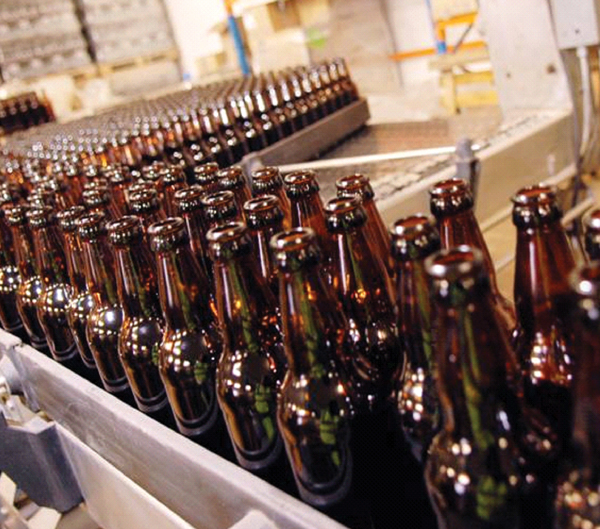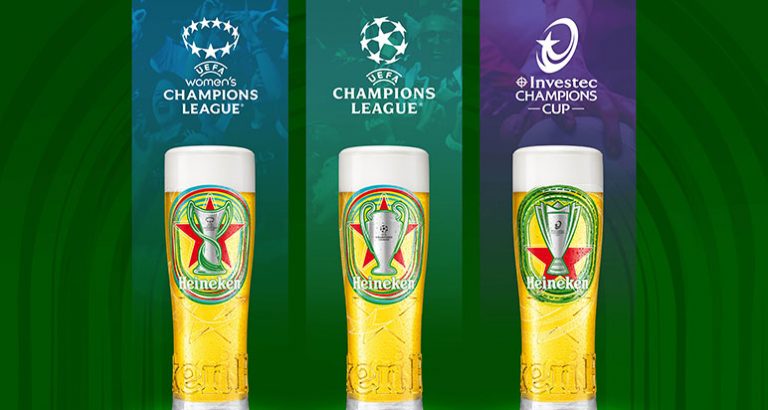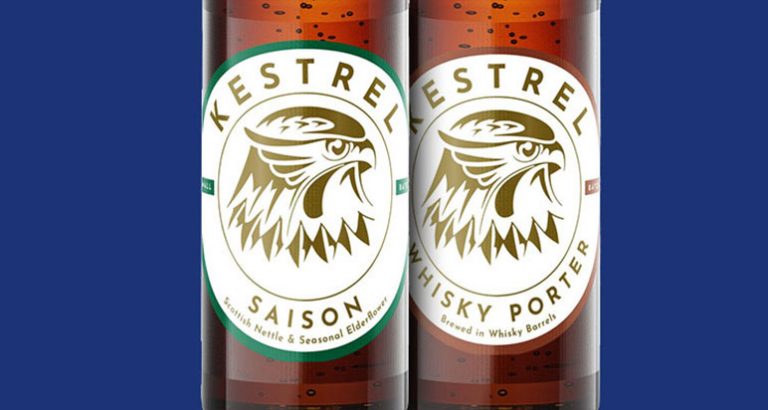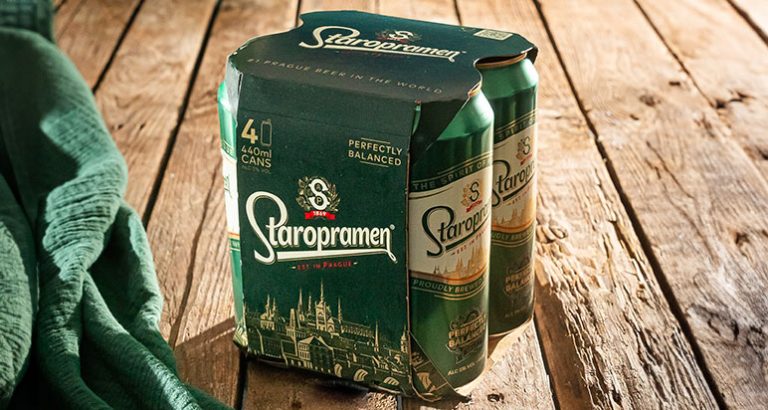The craft beer sector has exploded, with over 75 breweries in Scotland helping sales grow by 50% over the last two years, but there is still reluctance from local retailers over stocking local beers, which flies in the face of consumer demand.
by Kevin Scott
Among the wealth of incredible food and drink products indigenous to Scotland, beer is possibly the most talked about, currently. There are now over 75 craft breweries in Scotland with more planned as the lure of locally made brews reaches far beyond the niche part of the market they previously occupied. Entire shops have opened dedicated to craft beer, supermarkets dedicate up to three metres solely to craft, online ordering companies are being inundated. Yet in independent convenience, there is a reluctance to invest in products that differ from the mainstream brands. While these big brand beers will continue to dominate sales, there is a strong belief that 2014 is the year when local retailers should clear space for craft beer.
“What needs remembered is that something like 95% of beer comes from the big brewers and that’s not something that’s going to change overnight,” comments Gerald Michaluk, Managing Director of Arran Brewery. “You can understand why retailers only stock big brands, but if you look into the market, you can see the potential.” To illustrate that potential, in the last two years, craft beer sales in Scotland have grown by 50%. Is there any other category where 50% growth wouldn’t be openly embraced by local retailers? James Withers, Chief Executive of Scotland Food & Drink, says: “Craft beer is one of the most exciting sectors in food and drink just now and it’s growing in market presence day by day.” The roots of this craft beer movement can be traced back to 2002, when the then Chancellor Gordon Brown introduced tax relief for breweries producing under 500,000 litres per year, which cut duty by 50%.
This gave firms the chance to invest, innovative and expand. The more recent abolition of the duty accelerator on beer has also helped, along with an acclaimed brewing degree at Heriot-Watt Univerity. Simon Hannah, Managing Director of JW Filshill says his company has seen astronomical growth of 550% in craft beer since 2011. “It works on a number of levels from the larger operators like Innis & Gunn and Caledonian Brewery right down to the very small local operators,” he says. “It’s a great thing to see and there is so much room from growth. Volume may be small compared to the big FMCG brands, but growth is very strong.” With 76 breweries (at the last count) now making beer in Scotland, it’s not easy to decide which ones to stock. Every retailer is limited by what their wholesaler stocks, however there are two key areas to consider: the leading brands and the local brands. Leading brands are those craft beers which have wider distribution and are already well known to consumers. Products from the likes of Brewdog, Williams Bros., Orkney Brewery, Harviestoun and Arran Brewery fall into this category, and more on them shortly. Second to this is for local retailers to practice what they preach and buy beer directly from their local brewery.
This is a tactic that has proven to be hugely successful for Donna Morgan, who co-owns Best-one at Brownlies with her husband Bruce. In the market town of Biggar, Brownlies now stocks over 100 craft beers, and Donna says the venture has brought customers flocking to the shop, from further afield than Biggar too. “People come to us because we’ve got such a strong range,” she says. “We’ve got regular customers coming from Lanark. It’s not something that happened overnight, we had to work at it, but it’s going very well.” Donna has the following advice for retailers interested in selling craft beer: “Find your nearest brewery and try stocking their best-selling products to begin with,” she says. “For us it began with Broughton, though we now count Williams Bros. beers among our best sellers.” She adds: “Don’t go crazy at first. It’ll need time. And not everything will work; we’ve had some products that didn’t do well, so we didn’t restock and eventually we were able to settle on a core range, which we supplement with guest beers.” When it comes to a core range, most retailers will keep at least one product from Brewdog on shelf. It is a company which has used clever marketing to elevate its brand status way beyond its scale. The company may have courted much controversy but that means its beers are widely recognised. James Watt, Co-founder of Brewdog, says: “Independent retailers and craft beer are in many ways analogous.
They are both trying to make a mark in a scene dominated by mega corporations willing to outspend each other for pole position.” Local labels and best sellers One of the best selling craft beers in Scotland is Arran Blonde from the Arran Brewery. Gerald Michaluk comments: “I would advice retailers to have their local brewery stocked but remember that people want more than just local so keep some of the better known brands in stock. Also, don’t keep it static – always have something fresh on the shelf. You’ll quickly be able to work out three or four core products and then beyond that rotate a few extra lines every time you get a craft beer delivery. That keeps customers interested and engaged with the fixture – they’ll buy the regular lines and maybe also one or two of the rotating products.” He suggests keeping customers interested by doing different things, such as focus on one area of the country in a particular month, for example. “There are no shortage of brands – with over 70 breweries around the country offering roughly between three and 12 beers, you can do a lot,” he adds.
Arran has a number of deals in place with symbol groups and Michaluk says he is always trying to grow distribution in the independent sector. “We do have a good route to market. And there’s definitely movement this year. If you look at Tennent’s opening Drygate Brewery with Williams Bros., the fact that many small breweries are seeing their turnover double, there’s explosive growth as people begin to opt for a form of craft beer.” The Drygate Brewery that Michaluk mentions is a joint venture between Tennent’s and the popular Alloa-based craft beer firm Williams Bros. that has seen a brewery open in Glasgow that will utilise the skills of both companies. Its first beers will be available in May. Richard McLelland, Director of Sales and Brotherhood, at Williams Bros., says that the only problem the brewery currently faces is trying to keep up with demand. Williams Bros. are one of the bigger small breweries, with national listings in Sainsbury’s and Morrisons.
The company doesn’t deal directly with many symbol groups – McLelland saying that “at the moment we have to pick who we work with and the listings in the mults are critical, but we continue to support small independent off-licences. That’s your bread and butter. A lot of our off-trade sales comes through direct enquires, but we do have relationships with some wholesalers.” With distribution as it is, both in the on-trade and grocery the Williams brand, and many of its beers, including Fraoch Heather Ale, Joker IPA and Caesar Augustus, are becoming household names. McLelland says: “There is a broad range, from the more traditional ales that sell well in more rural areas, to the more esoteric brands that are more suited to a cosmopolitan area.” Someone who is very well placed to observe the current trend is Norman Sinclair.
He opened Orkney Brewery back in 1988, and produces a number of well–known beers, including Dark Island, Red MacGregor and Northern Light. He says: “There’s just been an explosion in craft beer. It’s not confined to the UK either. It’s a global trend. People everywhere are enjoying it. It’s fasionable to know where your beer comes is coming from, and on top of that, people are learning more about styles. It’s very interesting times.”
The company has been supplying to Spar for many years, and is available to Nisa retailers too, and independents through Wallaces Express – which, ironically, has just been acquired by Tennent’s owner C&C Group. Sinclair says: “Smaller retailers in general should have a craft beer offering, but how much depends on how much space they have. Of course they will always stock Tennent’s, Budweiser and the like but craft adds a new dimension. It could turn the shop into an attraction, where people seek it out because of the beer offering.” Sinclair points out that the main demographic for craft beer is higher-educated 18-35 year-olds, and it’s not strictly a male preserve either, so retailers in urban areas, near universities, or in tourist areas, are most likely to have success. James Watt says that he has noticed a change in the tastes of British beer drinkers in the last couple of years, with people now becoming increasingly aware that there are options beyond the brands they see on billboards and television screens. “Craft beer is also one those things in life where it’s hard to go back to your old ways once you realise what you’ve been missing.
Independent convenience retailers seeking to establish a strong and loyal clientele across a broad demographic absolutely need to have craft beer on their shelves”, he says. paying a premium What must be remembered too is that customers are willing to pay a premium for an artisan beer, so there’s more money to be made if your craft beer section does gets a bit of traction. Like any other part of the shop however, it requires hard work and fine tuning – putting two or three SKUs on the top shelf of the chiller isn’t enough. Even now, seven years after they first started selling craft beer, Donna and Bruce Morgan continue to refine their range.
They’ve recently changed the positions of regular and guest beers to ensure customers don’t just grab their usual. Donna says it’s something that every retailer should consider. “If you want to differentiate from the competition then craft beer does offer a point of difference. Near us, every competitor sells the same products. I don’t see the point in that. Being different is a recipe for success.” That’s something Simon Hannah agrees with wholeheartedly. “The big guys dominate the chilled space and they dominate volume. There’s the question of how you fit craft beer in the chiller, but there are enough retailers doing it.
By getting a range in, you could become a specialist easily enough. It provides that point of difference that increases the customer base.” James Withers adds: “A strategy to push craft beer to the next level would be a real boost for the sector and provide focus. Scotland will be welcoming the world as part of the major sporting and cultural events taking place in 2014; it is a real platform to build on.
It presents a great opportunity for local Scottish retailers to support the craft brewers on their door step and capitalise on the business opportunities and relationships as a result.” So, with 2014 seeing Scotland the brand growing in prominence domestically as well as internationally, there has never been a better time to invest in a category that – lest we forget – has grown 50% in two years in a declining market. McLelland adds: “The independent scene is beginning to swell. To be honest I think the symbol groups are a bit behind the times but I do understand that shelf space is at a premium. People are becoming more knowledgeable now though – and when you’ve had your first craft beer you don’t go back. It’s like having a bean-to-cup coffee and then going back to instant.”







